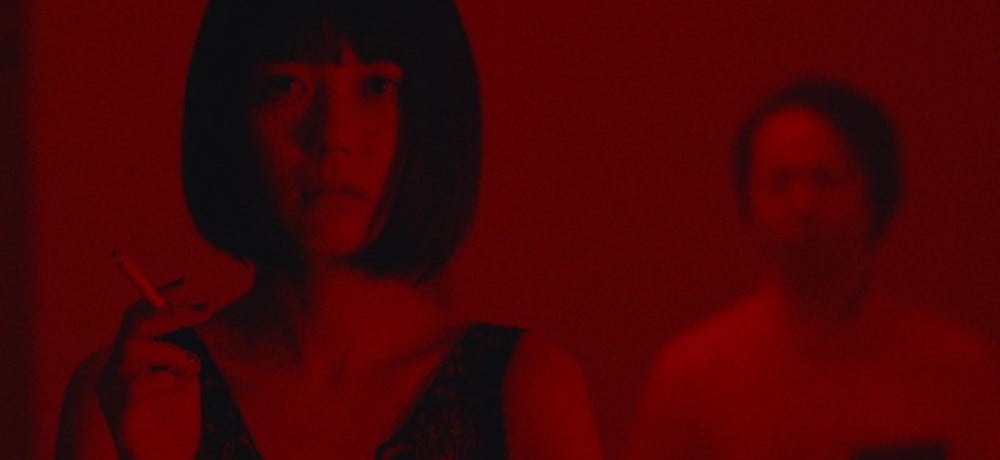


Edgar Allan Poe’s quote of “all that we see or seem is but a dream within a dream” from his 1849 poem A Dream Within a Dream goes hand in hand with New Religion, a surreal and dark tale that centres on loss, grief and the lengths some will go to exploit the two.
Miyabi (Kaho Seto) lives an unhappy life after her daughter, Aio, dies tragically after falling off a balcony whilst watering her plants. As a result, her marriage has broken down, and her ex-husband still abuses and blames her for their daughter’s death. Miyabi tries to keep her daughter’s memory alive by tending to the plants, but her new boyfriend would like her to move on from the tragic event.
Miyabi now works as a sex worker along with Akari (Kuroe Mizuta), a young woman who self-harms and appears to have reverted to a child-like state after the death of her father. After visiting one of her regular patrons, Akari goes on a violent murder spree before disappearing. Miyabi is then tasked with visiting Akari’s patrons, and the first one she visits is the last person Akari was with before the murders took place. The patron is a man who has a keen interest in moths and speaks with an artificial voice box after suffering with throat cancer. In his darkroom-like apartment, he requests that he take a picture of her spine. She agrees, but he doesn’t want to stop with a picture of her spine. Over a series of visits, Miyabi has her feet, legs, arms and more photographed. As more of her body is subject to the camera’s lense, Miyabi begins to dream about being with her daughter again, and the connection between the two grows stronger. Concerns now begin to grow for Miyabi’s health and wellbeing.
The patron tells her that it is possible for her to be reunited with her daughter, but it is unclear in what capacity the reunion will take place and how he factors into proceedings.
New Religion is a bleak and tragic movie that paints the world on the brink of dystopia. The downbeat tone and sense of melancholy is apparent from the start; the performances are rather muted and many of the characters appear to be in a state of apathy, which perfectly encapsulates the nihilistic and fatalist tone of the story. It is an uncomfortable and probing look into the nature of grief and how it is always a shadow that light cannot block out. Miyabi clearly still feels guilt, remorse and sorrow over her daughter’s death, and she is seemingly prepared to sacrifice her physical and mental state for memories and experiences with Aio, even though they may not be as they seem.
The visual style used by Director Keishi Kondo presents two different worlds. The scenes inside the patron’s apartment depicts a manufactured space – the harsh red light, the use of the patron’s voice box and the high-intensity score makes everything seem synthetic and unnatural. This is juxtaposed with scenes between Miyabi and her daughter at home and at the beach, which are peaceful, serene and calming. Elements from each world bleed into each other, suggesting that dreams are never too far away from nightmares.
New Religion isn’t the type of movie you can say you enjoyed watching, given the subject matter and themes, but it certainly is an accomplished and challenging one that blends surrealism, body horror, drama and much more. It is a tale that deserves a lot of attention.
Movie Score: 4/5
New Religion received its world premiere at FrightFest 2022.